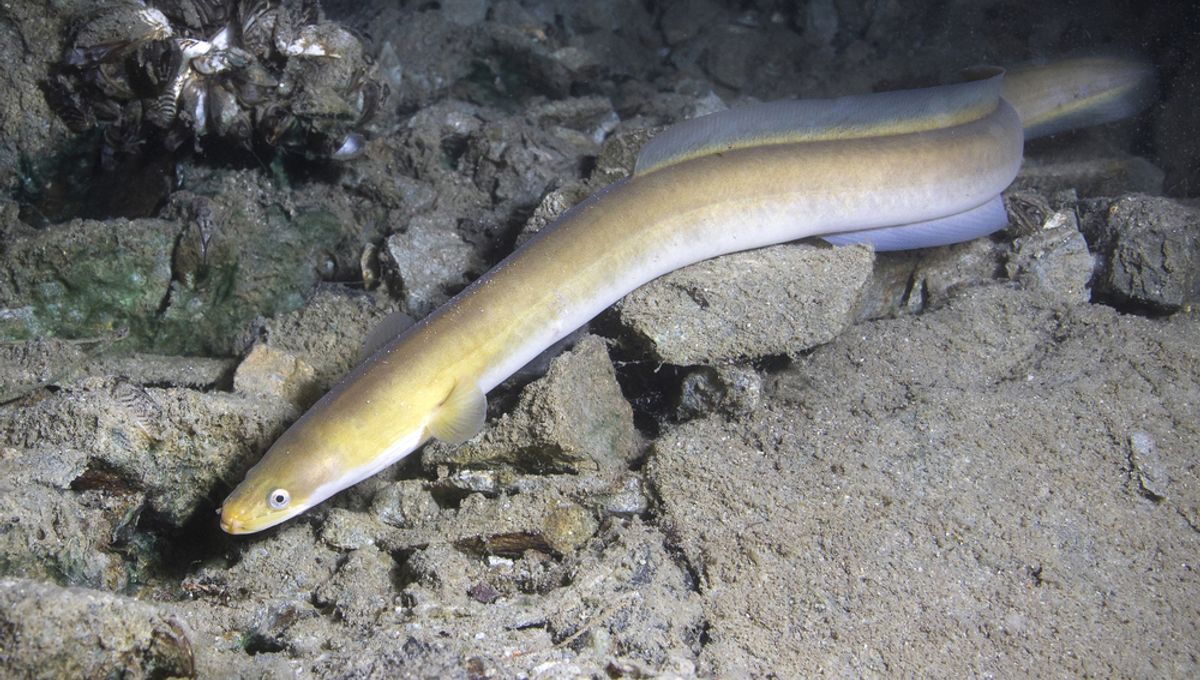
Outdoor music festivals — events that are no stranger to illicit substance use and public urination — could be responsible for contaminating local rivers with recreational drugs and messing with the lifecycle of endangered eels, according to research.
Scientists at Bangor University in Wales collected water from the Whitelake River in Somerset following the UK’s Glastonbury Festival 2019 and found worrying levels of both MDMA and cocaine. The researchers tested the river upstream and downstream of the festival site in the weeks before, during, and after the festival. Traces of the drugs were found to be significantly highest during the weekend after the festival in the Whitelake site, downstream of the festival.
MDMA was detected at “environmentally damaging levels,” according to their paper, while levels of cocaine were high enough to impact the local population of European eel, a dwindling species that’s critically endangered and at high risk of extinction. Unfortunately for the eels, cocaine doesn’t provide much of a buzz. Instead, as previous studies have shown, it can result in muscle damage and disrupts their complex lifecycle.
“A study from a few years ago exposed European eels to concentrations of cocaine. The eels experienced disruption of their endocrine system which caused delayed sexual maturation. Many eels spent longer in their glass eel phase than they would regularly, this disrupted their breeding rates,” Dan Aberg, study author from the Wolfson Carbon Capture Lab at Bangor University, told IFLScience.
“The concentrations of cocaine we found the weekend of the festival were above the concentrations used in the study, suggesting that cocaine could be damaging the local eel population.”
It might also be having an acute effect on vital organisms lower down in the food chain, such as tiny planktonic crustaceans called Daphnia. Aberg explained: “Daphnia are a core part of many freshwater ecosystem food chains.”
“The assessment found that MDMA concentrations were high enough to cause a 50 percent inhibition of function in Daphnia,” said Aberg.
“The term 50 percent inhibition of a function can refer to anything from growth rate to respiration rate. It basically means that the Daphnia will be working at 50 percent capacity,” he continued.
Festival-goers are instructed to use the official toilets provided, but the study argues that “public urination is a widespread issue” at many music festivals. Since some recreational drugs and their metabolites are excreted in pee, the team suggests that drug-laced urine is seeping into the ground, making its way downstream from the festival site, and finding itself in the nearby waterways.
While the Glastonbury festival was the subject of the study, the researchers argue that their work points to a much wider issue. As long as there are humans taking drugs and peeing, pharmaceuticals are likely to be leaking into the surrounding ecosystem.
“Glastonbury is one of, if not the most environmentally friendly festivals in the world. Discovery of these dangerous concentrations is an indicator of how widespread this pollution could be,” explained Aberg.
“Many other festivals both greenfield and city-based have worse toilet facilities and don’t educate their attendees on respecting the land. Other festivals across the UK undoubtedly are sources of illicit drug pollution and could potentially be releasing higher quantities.”
The study was published in the journal Environmental Research.
The original version of this article was published in September 2021.
Source Link: Eels Living Near Music Festivals Test Positive For MDMA And Cocaine